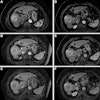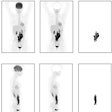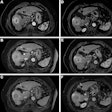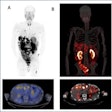
Radiologists can play a key role in identifying signs of intimate partner violence (IPV) amid the COVID-19 pandemic, according to an editorial published June 30 in European Radiology.
The outbreak has exacerbated existing physical and mental health issues beyond viral infection -- as seen in the increased incidence of intimate partner violence, according to a team led by Simon Matoori, PhD, of Harvard University.
"Radiologists should appreciate the significant increase in IPV and the challenges that IPV victims face in these times of freedom of movement restrictions, economic hardship, and reduced hospital-based support systems," the authors wrote.
Intimate partner violence is defined by the World Health Organization as "any behavior within an intimate relationship that causes physical, psychological, or sexual harm to those in the relationship," Matoori and colleagues noted. Victims of intimate partner violence often make use of the emergency department when they are injured, but they may not do so as often in the midst of the pandemic for fear of infection or due to social distancing protocols. Additionally, the ability to discuss abuse can be compromised when victims must meet with doctors via telehealth appointments from home.
Since the pandemic hit, a number of North American cities saw spikes in intimate partner violence rates when they locked down to curb the virus's spread, the researchers noted:
| Domestic violence rate increases in North American cities, 2020 compared with 2019 (investigation range, February to April)* | ||
| City | Lockdown date | Percent change in domestic violence reports |
| Boston, MA | March 24 | +27% |
| Chicago, IL | March 21 | +10% |
| Philadelphia, PA | April 1 | +7% |
| Portland, OR | March 23 | +20% |
| Seattle, WA | March 23 | +21% |
| Toronto, ON | March 17 | +19% |
Diagnoses common in intimate partner violence victims include contusions or abrasions, lacerations, strains or sprains, internal organ injuries, and fractures; injuries are often found in the upper and lower extremity, upper trunk, and head/neck, Matoori and colleagues noted.
"The patient records may also give important clues as IPV victims generally visit the emergency department more often and undergo more imaging studies, and many contain terms like 'contusion of soft tissue' and 'superficial bruising,' " the group wrote.
How can radiologists actively support efforts to keep victims of intimate partner violence safe? One way is to review protocols for identifying and supporting these patients and train staff to implement these protocols both during the pandemic and beyond, according to the authors.
But in any case, the pandemic is calling radiologists to step more deeply into patient care, the investigators concluded.
"The global COVID-19 crisis has direct effects on families and communities, and we are witnessing how it can reshape and exacerbate existing social issues," they wrote. "However, this also presents an opportunity for radiologists to use their diagnostic competence to make a difference."
















